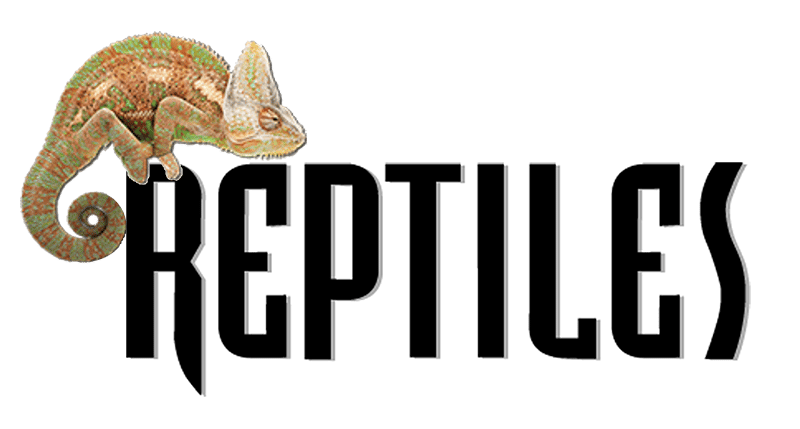Wildlife-human coexistence can be difficult. Wildlife can create challenges for humans such as threatening their safety, livelihood, and food sources.
Wildlife-human coexistence can be difficult. Wildlife can create challenges for humans such as threatening their safety, livelihood, and food sources. Challenges that wildlife face emerge from the expansion of human population growth: expanding agriculture, climate change, and retaliation for injuring humans. However, these conflicts have serious consequences threatening an animal’s existence, especially among carnivores (IUCN, 2022). Human activities, such as destroying habitats and intentional killings, have caused population declines in several snake species, even though these animals provide both biological and ecological benefits like controlling rodents and being a source of food. (Kontsiotis, 2022).
For snakes, increased killing or habitat destruction can be fueled by false information and misconceptions held towards these reptiles. Some misconceptions are common myths heard from people who are not interested in these animals. Many professional herpetologists and zookeepers specializing in reptiles have heard false claims regarding snakes and behavior. These claims include that snakes are slimy animals, large snakes are venomous, or that snakes hunt people (Lipscomb, 2019). This information is easily and falsely spread and can have an unfortunate impact on certain snake species.
One species suffering the consequences of false information is the Russell’s Viper (Daboia russelli) of Southeast Asia. In the Indian state of Assam, a teenager was bitten by a Russell’s viper, which sparked a deluge of misinformation. There were huge exaggerations about viper bites, with claims stating that humans will die within seconds, or that these snakes pursue human beings. This misinformation resulted in harmful acts toward other species. After this bite occurred, there were reported killings of other snakes because they were misidentified as Russell’s vipers.
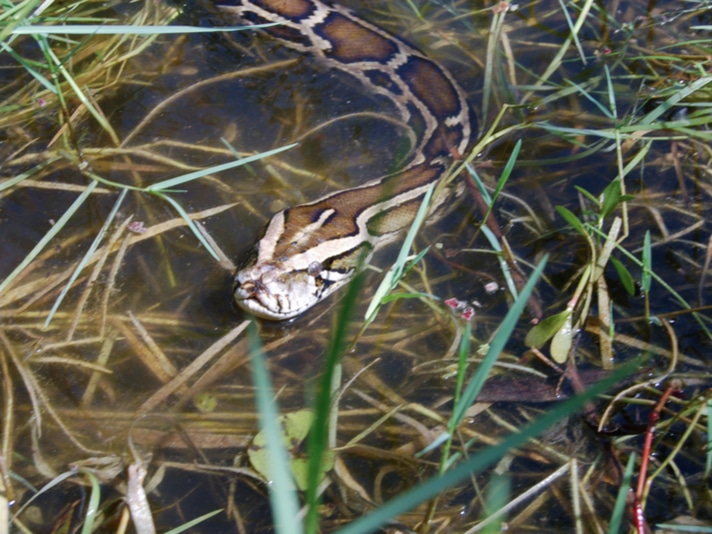
Burmese python. Photo by Heiko Kiera/Shutterstock
In Assam’s Dibrugarh District, a farmer accidentally killed a young Burmese python (Python bivittatus) by confusing this non-venomous species with the venomous Russell’s viper due to the negative attention on social media, and another incident occurred where a rough scaled sand boa (Eryx conicus) was killed due to confusion (Bhattacharya, 2024). This attention can easily eclipse the benefits of these reptiles and exacerbate false misconceptions. The negative attention can make it hard for people to view these reptiles as species that deserve the basic necessities of survival and respect, just like any other protected animal.
Snake Species Threatened by Humans
- Eastern indigo snake (Drymarchon couperi): This species is listed as least concern by the IUCN, but is considered a federally threatened species. Threats to this species include habitat fragmentation, destruction and collecting for domestication (FWC, n.d.).
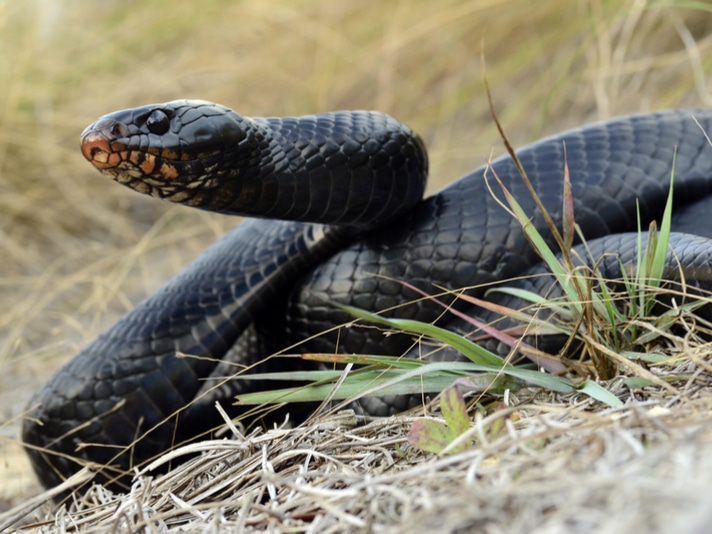
Eastern indigo snake Patrick K. Campbell/Shutterstock
- Burmese python (Python bivitatus): This python is listed as vulnerable by the International Union Conservation of Nature and has dramatically decreased due to hunting, collecting for the pet trade, and habitat destruction by converting land to agricultural usage (Times of India, 2024).
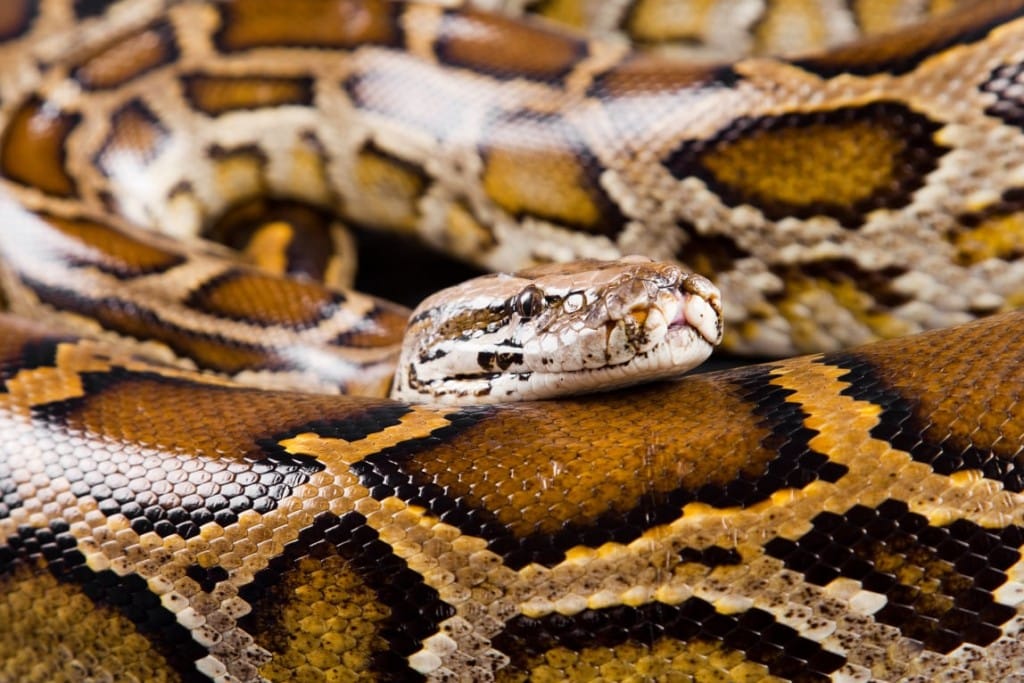
The Burmese python is one of the largest snake species in the world. Photo by Irina Oxilixo Danilova/Shutterstock
- Eastern Massasauga (Sistrurus catenatus): This snake was listed as endangered because of habitat loss brought on by land being covered for agricultural usage (Illinois Department of Natural Resources, 2025).
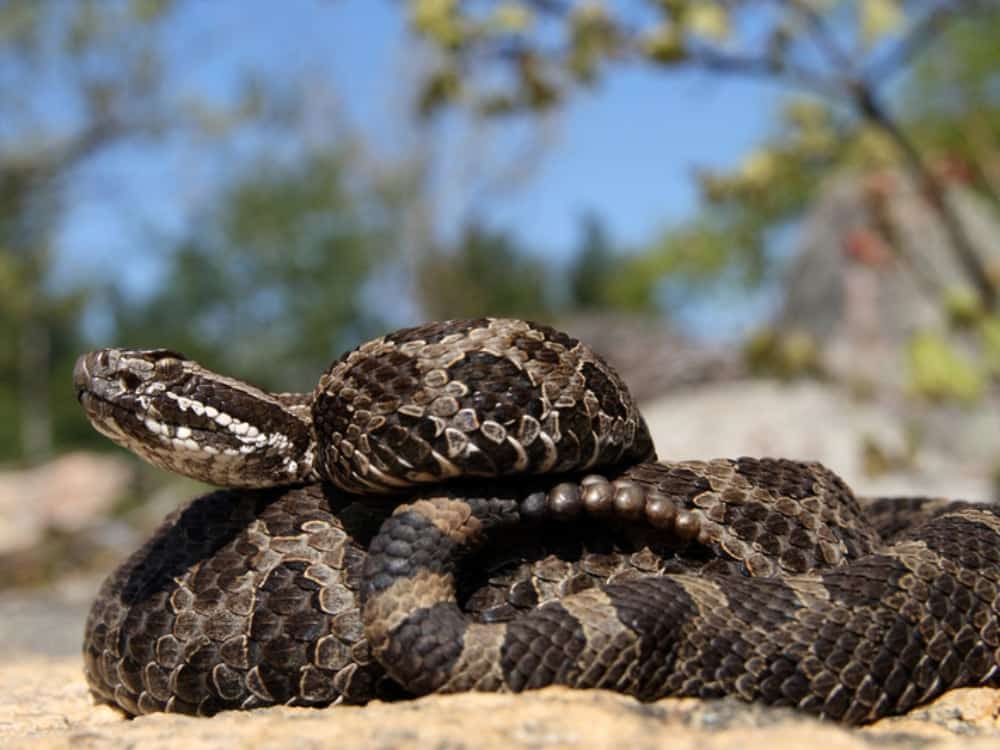
Eastern massasauga rattlesnakes are federally listed by the U.S. Fish and Wildlife Service as threatened under the Endangered Species Act. Photo by Ryan M. Bolton/Shutterstock
Snakes Impacted By Humans
Globally, snake populations have decreased due to actions such as habitat destruction, overexploitation, illegal trade, and intentional killing. These activities have resulted in ~12% of snake species being threatened with extinction. However, this decline is further influenced by negative views and fears people have toward these animals (Kontsiotis, 2022).
Various cultures imbue snakes with negative qualities or emotions, ranging from evilness, disgust, foulness, being abhorrent, or serving as a forewarning of death (Kontsiotis, 2022). One of the earliest examples of this negative association can be seen within the creation story of Adam and Eve, wherein Eve was tempted by a snake to eat from the Tree of Knowledge of Good and Evil. For this transgression, Adam and Eve were cast from the Garden and the serpent condemned to move on its belly (O’Shea, 2024).
Aside from the long-term negative symbolism associated with these reptiles, there is a great deal of positive symbolism surrounding snakes. In different cultures, snakes can be referenced in the mythology of various civilizations around the world, and be associated with positive aspects. One example of this nature can be seen within the story of Buddha. In Buddhism, it is said that a cobra shielded Buddha from rain and as a thank you, he placed a mark on the cobra’s head. In the Sri Lankan version of this story, it was said that he left two marks and that this was how the Indian cobra (Naja naja) got its hood symbol, whereas the single mark is how the monocled cobra (Naja kaouthia) gained its mark (O’Shea, 2024).
Biological and Ecological Benefits of Snakes
From a biological or medical perspective, these reptiles are beneficial, especially when their venom is involved. However, this can be a challenge because people may fear venomous snakes (Kontsiotis, 2022). Around the world, up to 138,000 people die from venomous snake bites each year. Most of these bites occur in the countries of India, Nepal, Nigeria, Myanmar, and Papua New Guinea (O’Shea, 2024). Some of these bites are due to agricultural workers encountering snakes during their workday. In India, both Indian and monocled cobras are species encountered when working in poppy fields (Martins et al., 2019). Even though these bites can be detrimental, there are benefits from their venom.
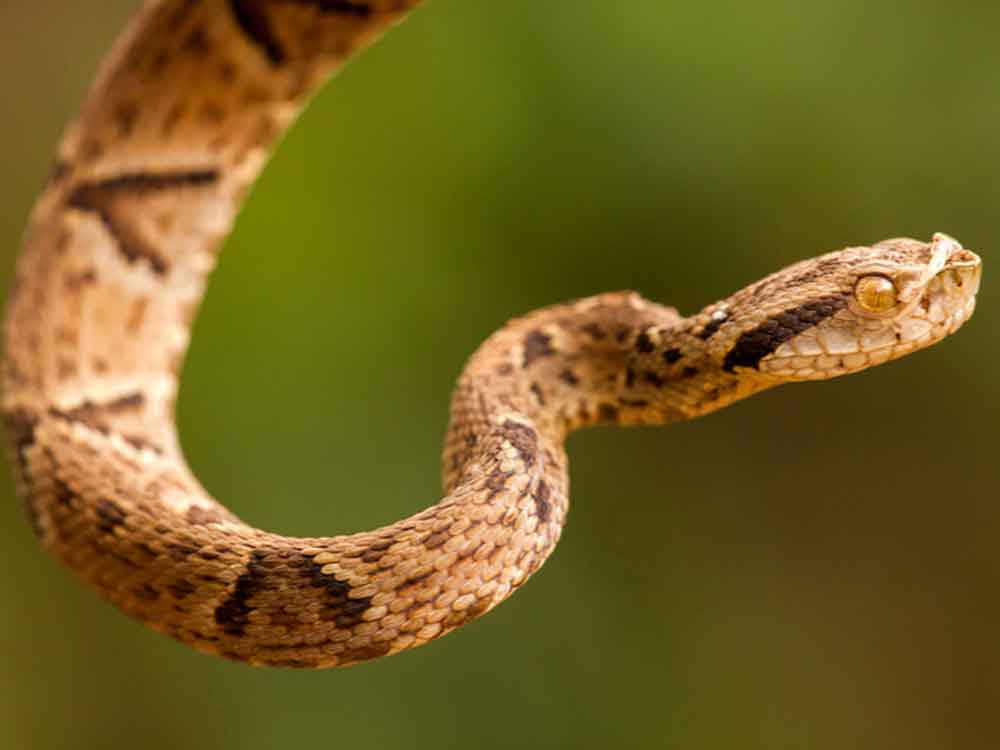
The Brazilian pit viper, or jararaca (Bothrops jararaca), was instrumental in pioneering work on the use of venom in drug development and discovery. Photo by Shutterstock
Some snakes have their venom extracted to be used in developing medicines and drug therapies, such as the Malayan pitviper (Calloselasma rhodostoma).This viper is native to Southeast Asia and its venom has been used in the development of a drug that prevents blood clot formation after surgeries (O’Shea, 2024). Another snake species whose venom is used in medicine is the Russell’s Viper (Daboia russelli). This snake’s venom is used in diagnosing a condition known as antiphospholipid syndrome (Canas, et al. 2021). Even though there are benefits when it comes to snake venom, further benefits come from other snake species. One of these added benefits is managing rodent populations.
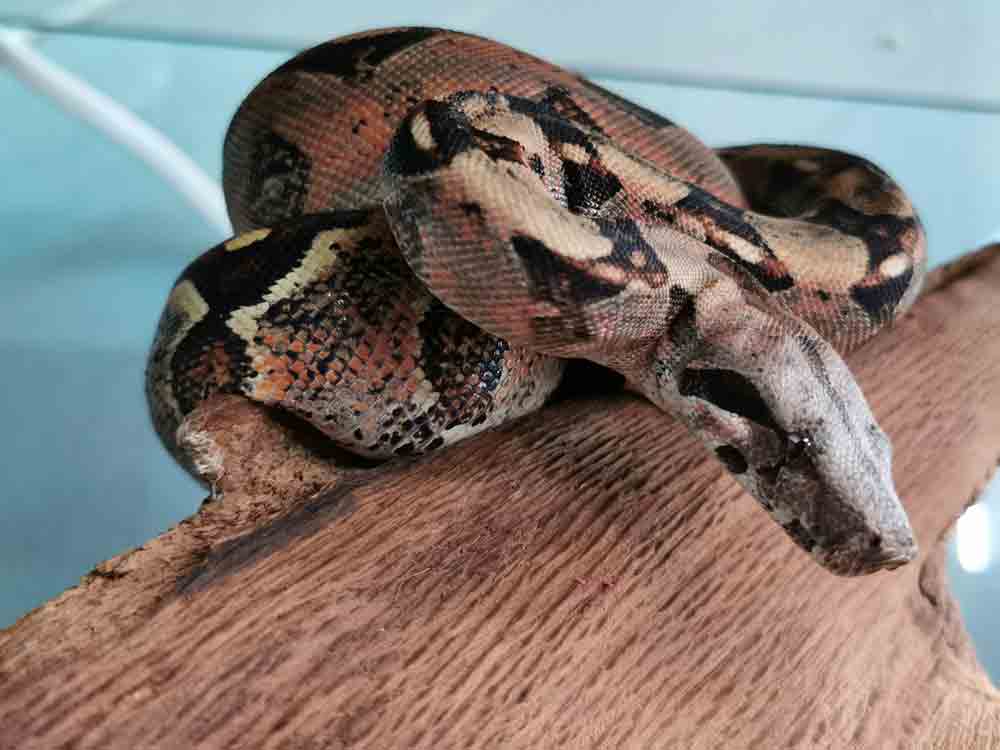
Boa constrictors grow to about 8 to 10 feet. Photo by Alex Baranska/Shutterstock
Snakes are a major asset when it comes to managing populations of other animals, as well as the diseases that are transferred between populations. In South America, one species that provides this excellent service is the Boa constrictor. This snake is native to the countries of Peru, Colombia, Ecuador and Brazil, but in Brazil, this snake regulates the spread of the disease leishmaniasis. Boa constrictors slow the spread of this disease by preying on the opossums that act as a carrier for leishmaniasis (O’Shea, 2024). Another snake species that manages rodent populations can be found in Australia. Shine, et al. (2024), discusses how venomous snakes are beneficial when managing rodent populations for farmers. One group of snakes that the author focuses on are the brown snakes of Australia. He informs that these animals can remove thousands of mice from farmland and one adult Eastern brown snake (Pseudonaja textilis) can eat up to 50 mice per year.
Captivating Animals
Snakes are found on six of the seven continents. Encountered when walking through prairies, visiting lakes and deserts, or walking through the woods, just to name a few habitats, these animals sometimes inspire both fear and fascination. Depending on where you go, humans can speak of these reptiles either negatively or positively. However, they provide unique biological services. From managing rodent populations, to protecting our crops, to their venom being used in developing medical treatments, these are animals, like all animals, that play important roles. To continue their existence, we need to give these animals places to survive and thrive. As we continue into the future and face various ecological challenges, we have to remember that snakes are animals we also need to protect and ensure are still here within the future to come.
Noah Wilson is a zoologist and biology graduate student with Miami University. He’s worked in various zoos, obtained a certificate in handling venomous snakes and is an advocate for the conservation and education of reptiles and amphibians.
Works Cited:
Bhattacharya, B.K. (2024). Misinformation about Russell’s viper stokes incidents of snake killing in Assam. Mongabay. https://india.mongabay.com/2024/08/misinformation-about-russells-viper-stokes-incidents-of-killing-in-assam/
Canas, C.A. Canas, F. Herrera, F.C. Tobon, G.J. Valencia, S.C. (2021). Biomedical applications of snake venom: from basic science to autoimmunity and rheumatology. Journal of Translational Autoimmunity. Vol 4. www.sciencedirect.com.
FWC (n.d.). Eastern Indigo Snake. Florida Fish and Wildlife Conservation Commission. https://myfwc.com/wildlifehabitats/profiles/reptiles/snakes/eastern-indigo-snake/ Accessed 19th March 2025.
Illinois Department of Natural Resources (2025). eastern massasauga. https://dnr.illinois.gov/education/wildaboutpages/wildaboutsnakes/wasnfamilycrotalidae/wasneasternmassasauga.html#:~:text=The%20endangered%20status%20of%20the,less%20than%2010%20Illinois%20populations.
IUCN (2022). Human-wildlife conflict. Issues Brief. https://iucn.org/resources/issues-brief/human-wildlife-conflict
Lipscomb, K. (2019). Snakes are slimy and poisonous and other myths debunked. Virginia Department of Conservation and Recreation. https://www.dcr.virginia.gov/state-parks/blog/snakes-are-slimy-and-poisonous-and-other-myths-debunked
Kontsiotis, V.J. Rapti, A. Liordos, V. (2022). Public attitudes towards venomous and non-venomous snakes. Science of the Total Environment. 830. https://www.sciencedirect.com/science/article/pii/S0048969722020113?casa_token=X5LrcnB84xQAAAAA:faczZeYi0b3AfdS8lgeuOex9xrms-M7Vshn40ORuzFojGP8e_3icY4qxOyzkBGsMU-FXeq7-
Martins, S.B. Bolon, I. Chappius, F. Ray, N. Alcoba, G. Ochoa, C. Sharma, S.K. Nkweschu, A.S. Wanda, F. Durso, A.M. Ruiz de Castaneda, R. (2019). Snakebites and its impact in rural communities: The need for a one Health approach. National Library of Medicine. National Center for Biotechnology Information. https://pmc.ncbi.nlm.nih.gov/articles/PMC6762925/
O’Shea, M. (2024). The Book of Snakes A Life Size Guide to Six Hundred Species From Around The World. Second Edition. Princeton University Press. 32-24.
O’Shea, M. (2024). The Book of Snakes A Life Size Guide to Six Hundred Species from Around The World. Second Edition. Princeton University Press. 104.
O’ Shea, M. (2024). The Book of Snakes A Life Size Guide to Six Hundred Species From Around The World. Second Edition. Princeton University Press. 570.
Shine, R. Dunstan, N. Abraham, J. Mirtschin, P. (2024). Why Australian farmers should not kill venomous snakes. Animal Conservation. 27(4). 415-425. https://zslpublications.onlinelibrary.wiley.com/doi/10.1111/acv.12925
